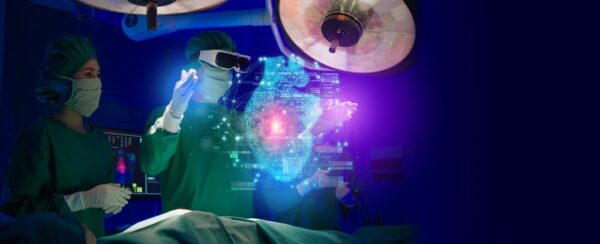Neuraxial anesthesia has long been a cornerstone of anesthetic practice, offering clinical benefits for a wide range of procedures, from labor and delivery to major surgeries. The field is constantly evolving, driven by technological innovation, updated guidelines, and emerging challenges.
In 2025, neuraxial anesthesia stands at the intersection of tradition and transformation. Practitioners are adopting advanced imaging techniques like ultrasound and exploring the potential of artificial intelligence, while facing practical concerns like medication shortages and the need for standardization. Join us in reviewing the current state of neuraxial anesthesia today, examining how these advancements, challenges, and best practices are shaping the field.
Ultrasound-guided neuraxial techniques
Investigating technology plays an increasingly important role in elevating patient satisfaction — and outcomes, though its direct impact on patient satisfaction remains unclear. Ultrasound guidance has refined neuraxial anesthesia by enabling real-time imaging of anatomical structures. Traditional techniques have often relied on palpation, which could lead to inconsistent results, particularly in patients with complex anatomies. The introduction of ultrasound guidance has overcome some of these barriers in important ways:
- Real-time imaging enables anesthesiologists to identify and target specific anatomical landmarks accurately.
- Complications and patient discomfort may be minimized through precise needle placement.
- First-attempt success rates are significantly higher with ultrasound guidance.
Traditional ultrasound systems can be cumbersome, with limited availability on the L&D floor. Handheld systems designed for neuraxial procedures, however, can be more readily available, simplifying workflows with enhanced usability. This evolution makes ultrasound guidance not just a technological advancement but a catalyst for progress and innovation in anesthetic care, where precision translates directly into better patient outcomes.

Artificial intelligence in anesthesia
Artificial intelligence (AI) has been a transformative force in healthcare, particularly in enhancing the safety and efficiency of neuraxial anesthesia. Here’s what it can do:
- Algorithms improve accuracy in identifying spinal landmarks through automated landmark identification.
- Real-time decision support provided by AI offers actionable insights during procedures, reducing cognitive load.
- Continuous data analysis helps identify risks early, enhancing patient monitoring.
The integration of AI into anesthesia workflows is a testament to how technology can support clinicians in making informed decisions quickly and accurately. Upcoming discussions at the 2025 ASRA Spring Meeting are expected to explore the broader impact of AI on healthcare. These conversations highlight AI’s potential to influence procedural standards and patient safety.
Extended reality (XR) technologies
XR technologies, including virtual and augmented reality, are remapping anesthesiology training by providing immersive simulations.
- They enhance familiarity with complex anatomical environments through visual immersion.
- They offer hands-on practice in a risk-free setting, enabling better preparation for real-world scenarios.
- They uncover and help bridge knowledge gaps in specialized procedures, ensuring clinicians are well-prepared to implement innovative technologies in practice.
By blending immersive learning with practical applications, XR technologies pave the way for a generation of practitioners equipped to handle the complexities of modern medicine with confidence and skill.

Updated guidelines and best practices
Efforts to standardize terminology in regional anesthesia are improving communication and safety, even if slowly. The ASRA-ESRA Delphi Consensus Study has made significant strides toward establishing consistent terminology that can reduce miscommunication among practitioners. While its canonical weight is still debated, the conversation is an important step toward consensus.
Improved protocols ensure alignment in procedural approaches and enhance collaborative care. By creating a universal language for neuraxial procedures, these efforts foster clarity and precision across healthcare settings. Standardized communication improves teamwork and ensures that critical details are understood uniformly, which ultimately elevates patient care.
Similarly, updated infection control guidelines highlight evidence-based practices to minimize risks during neuraxial procedures. Key recommendations include:
- Adhering strictly to aseptic techniques to prevent infections during procedures.
- Using sterile equipment consistently to maintain high safety standards.
- Developing comprehensive protocols for high-risk patients to address unique vulnerabilities.
These guidelines reflect a commitment to upholding the highest standards in patient safety across practices and patients. They serve as a reminder of the responsibility clinicians have to continuously adapt to new evidence and refine their practices.
Addressing current challenges and future directions
Medication shortages, including local anesthetics and opioids, present ongoing challenges. The American Society of Anesthesiologists (ASA) has been actively addressing drug shortages by collaborating with the U.S. Food and Drug Administration (FDA) and other organizations. They have conducted surveys to assess the impact on practices and have issued statements to guide practitioners during shortages.
- Practitioners are exploring the use of alternative medications to mitigate supply chain disruptions.
- Multimodal analgesia techniques are being implemented to reduce reliance on scarce drugs.
- Newer ASA’s guidelines provide recommendations to ensure consistent patient care despite shortages.
The fragility of medical supply chains — and the need for proactive strategies to ensure uninterrupted patient care — have become clear and pressing for many providers. Addressing these challenges requires collaboration across stakeholders, including healthcare providers, industry leaders, and policymakers.
Continuous education has also emerged as a vital focus for 2025 and beyond, especially as the next generation of practitioners become medical leaders. Programs such as the Ultrasound-Guided Regional Anesthesia Course offered by ASRA provide:
- Hands-on training equips anesthesiologists with the latest techniques for safer and more efficient procedures.
- Procedural refinement opportunities ensure clinicians can confidently implement new tools and methods.
- Knowledge-sharing platforms facilitate discussions about emerging trends and best practices.
These collective efforts promote a culture of innovation and excellence in anesthesiology. By staying engaged in lifelong learning, practitioners have more options for ensuring that their patients benefit from the best that modern medicine has to offer.

How will you stay informed?
As we survey the landscape of neuraxial anesthesia in 2025, one thing is clear: this is a pivotal moment for the field. The integration of cutting-edge technologies like ultrasound and artificial intelligence, paired with updated guidelines and educational initiatives, is transforming how anesthesiologists approach these critical procedures.
Yet, challenges continue to emerge, and there is still work to be done. By staying informed, adopting best practices and technology early, and participating in ongoing dialogue and education, anesthesiologists can navigate changes ahead with confidence.
